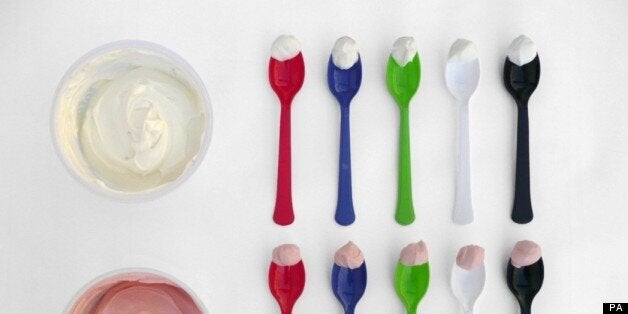
People who eat with their hands in other countries may be on to something - apparently, food flavour can be affected by the colour, weight and shape of cutlery, according to scientists.
Volunteers rated white yoghurt as sweeter and more expensive than pink yoghurt when eaten from a white spoon.
The effect was reversed for yoghurt tasted from a black spoon. In this case, the pink variety was preferred.
A blue spoon also made pink yoghurt taste significantly saltier than white yoghurt, the researchers found. And yoghurt tasted richer from a light plastic spoon than from a weighted heavier one.
Willy Wonka chef Heston Blumenthal has long since expounded that food is a multi-sensory experience and says "the interplay of sight, smell, sound and taste all play an important part in our appreciation and enjoyment of food."
Colour also plays a role in how we experience food, The Guardian's Amy Fleming said: "You only have to consider the insatiable public appetite for food porn masquerading as cookbooks to see there is meat to the old adage: we eat with our eyes."
In another experiment, cheese tasted saltier when offered on a knife instead of a spoon, fork or toothpick.
Lead researcher Vanessa Harrar, from Oxford University, said: "How we experience food is a multisensory experience involving taste, feel of the food in our mouths, aroma, and the feasting of our eyes.
"Even before we put food into our mouths, our brains have made a judgment about it, which affects our overall experience."
A previous study showed that beverages served in glasses tinted with cold colours, such as blue or green, were rated more refreshing.
The new research is published in the journal Flavour.
Dr Harrar added: "Subtly changing eating implements and tableware can affect how pleasurable, or filling, food appears. So, when serving a dish, one should keep in mind that the colour of the food appears different depending on the background on which it is presented (plate or cutlery) and, therefore, tastes different.
"This may also be used to help control eating patterns such as portion size or how much salt is added to food. Alternatively, people may be able to make better food choices if their ingrained colour associations are disrupted by less constant advertising and packaging."